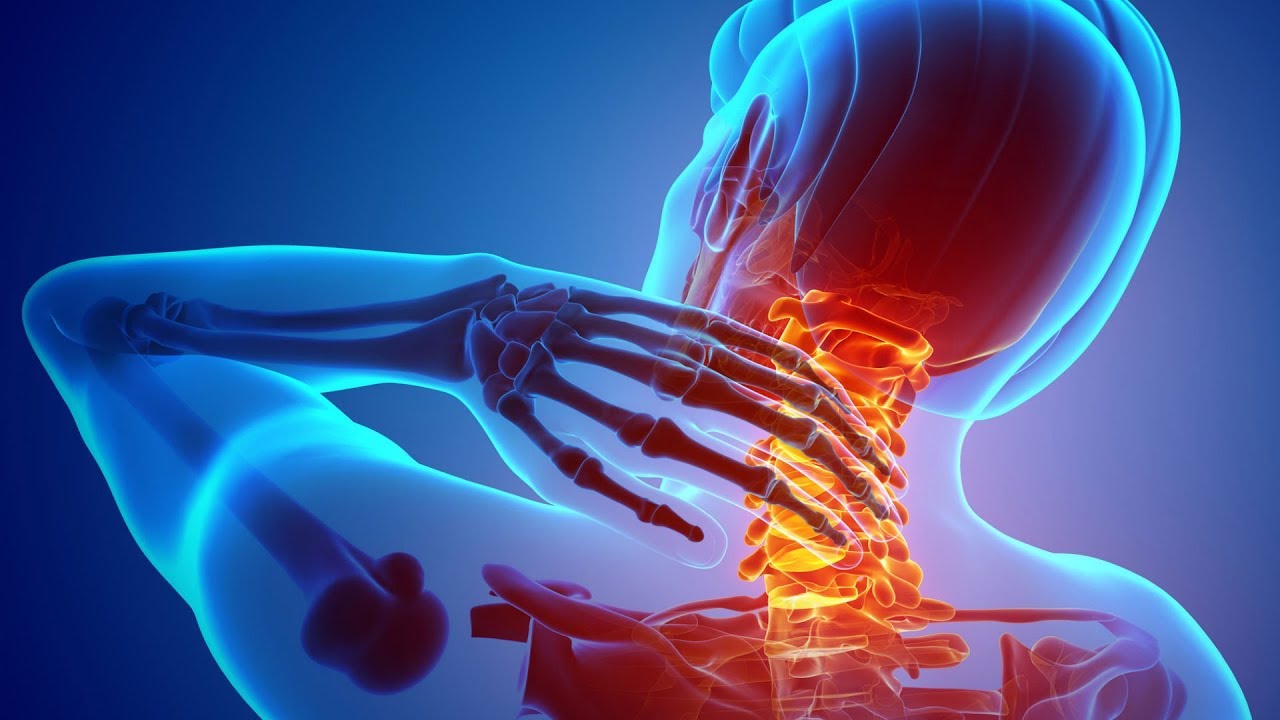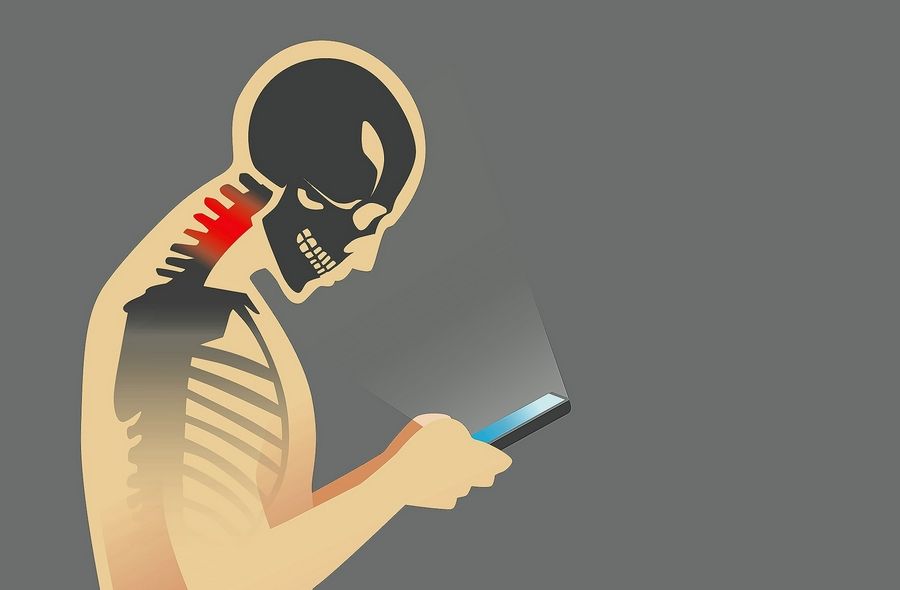Fri 03 July 2020:
Smartphones and tablets are now an integral part of our daily lives. The applications and utility of these devices has greatly changed our lives and the way we work, but in turn they have also had a huge impact on our habits and postures.
What Is Tech Neck?
Tech neck, also referred to as cervical kyphosis, is a frequently painful condition that results from the hunchback slouch many individuals employ when they’re using their electronic devices. The issue starts when you bend your neck forward so you can look at your smartphone or another electronic device. Doing this:
- Places a great deal of strain on your spine
- Causes a lot of tension to your neck and shoulders
- Causes upper-back pain

Several reports show that the spine is placed under stress when using the smartphone. In order to bring the devices closer to our faces, our back becomes rounded, shoulders rolled inward and head tilts forward. This can cause muscle tension and pain and then overtime can lead to the development of early osteoarthritis in the cervical spine. These postures and stress which cause pain has been coined the “text-neck”.
Considering that people spend between 2 and 4 hours bent over their electronic devices to read or text, this represents between 700 and 1,400 hours per year is spent in positions which cause excessive stress.
The thumbs and wrists are also subject to the development of injuries due to the misalignment of the joints when typing on a cell phone. “Texting thumb”, also known as de Quervain syndrome, is a condition that affects the tendons on the thumb side of your wrist. De Quervain syndrome is caused by activities that require repetitive hand or wrist movement, such as excessive texting.
The impacts of technology are also felt on the quality of sleep and cognitive abilities. Heavy technology use has been found to result in a higher risk of sleep disturbances as the blue light of the screens stimulate the mind, resulting in difficulties falling asleep.
Did you know that over 20% of cell phone users sleep with their device activated, while this number increases to 80% among teenagers?

Here are 7 tips to help you avoid neck and back pain caused by smartphones:
- Bring the device to eye level. This will minimize the bend in your neck and maintain optimal spine posture;
- Use the hands-free function during long conversations;
- Keep your messages short on mobile devices and use a computer for longer messages;
- Take frequent micro-breaks to move/stretch your neck and back. Limit your device use to 20-minute sessions. Consider making a phone call rather than spending a long time texting;
- Download an app to dim the blue light on your screens; and
- When possible, try to avoid bringing your smartphone to the bedroom. This will eliminate any temptation to pick the device up when you are trying to fall asleep.
OTHER INTERESTING FACTS ABOUT TEXT NECK
- In 2010, Gustafsson found differences in thumb postures between men and women. Shoulder, neck and arm muscle movements… and the motion of the thumbs… were measured – the researchers found significant differences in muscle load and thumb position when the texter was sitting instead of standing. This may lead to redesign of smartphones in the future.
- Also, women had higher muscle activity in the muscle that extends the four fingers (extensor digitorum) and the muscle that moves the thumb and wrist (abductor pollicis). Women also had greater thumb speed, greater thumb movement and fewer pauses between thumb movements (I guess women are just really into texting!). The gals also had more musculoskeletal issues including neck pain from texting – women with higher thumb movement and fewer pauses had more issues with text neck.
TEXTING – KEEP BREATHING!
A study by Lin in 2009 used biofeedback and discovered that texters had significant physiological responses that they were not aware of. Things like holding their breath when receiving texts – and showing signs of arousal or heightened stress. These “symptoms” of texting led to a higher likelihood of experiencing pain… especially neck and shoulder pain – with 83% of participants reporting neck and shoulder pain while texting. The study’s author suggests that this physiological response could be a key to reducing the amount of neck pain from texting. One must be trained to breath consistently and not “freeze” when receiving or sending texts.
Finally, visiting a massage therapist or chiropractor can help greatly when you’re suffering from tech neck side effects. But, if tech neck is causing you pain or damage to your spine or neck, you should seek professional help from a certified spine specialist.
Think your friends would be interested? Share this story!





